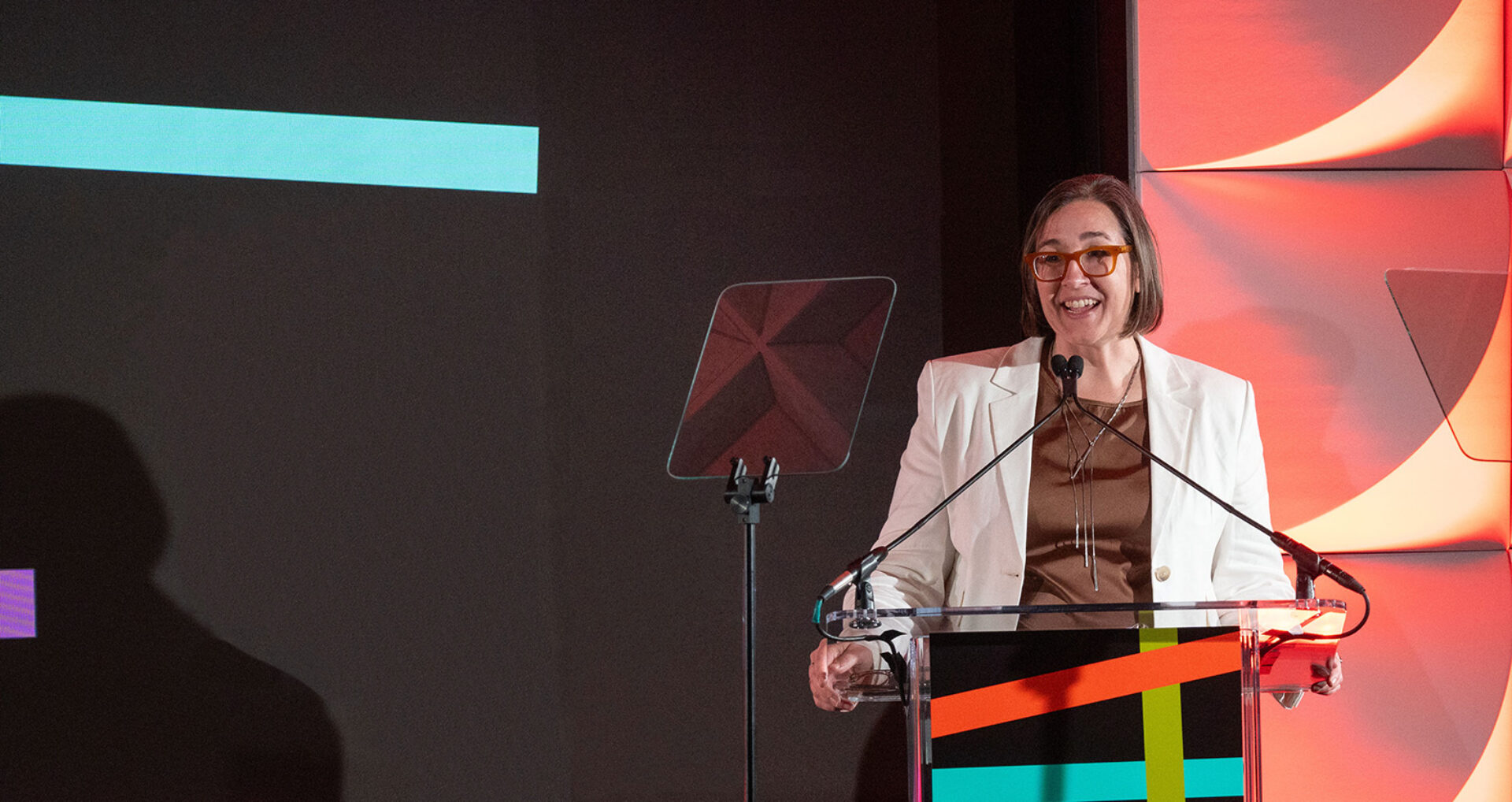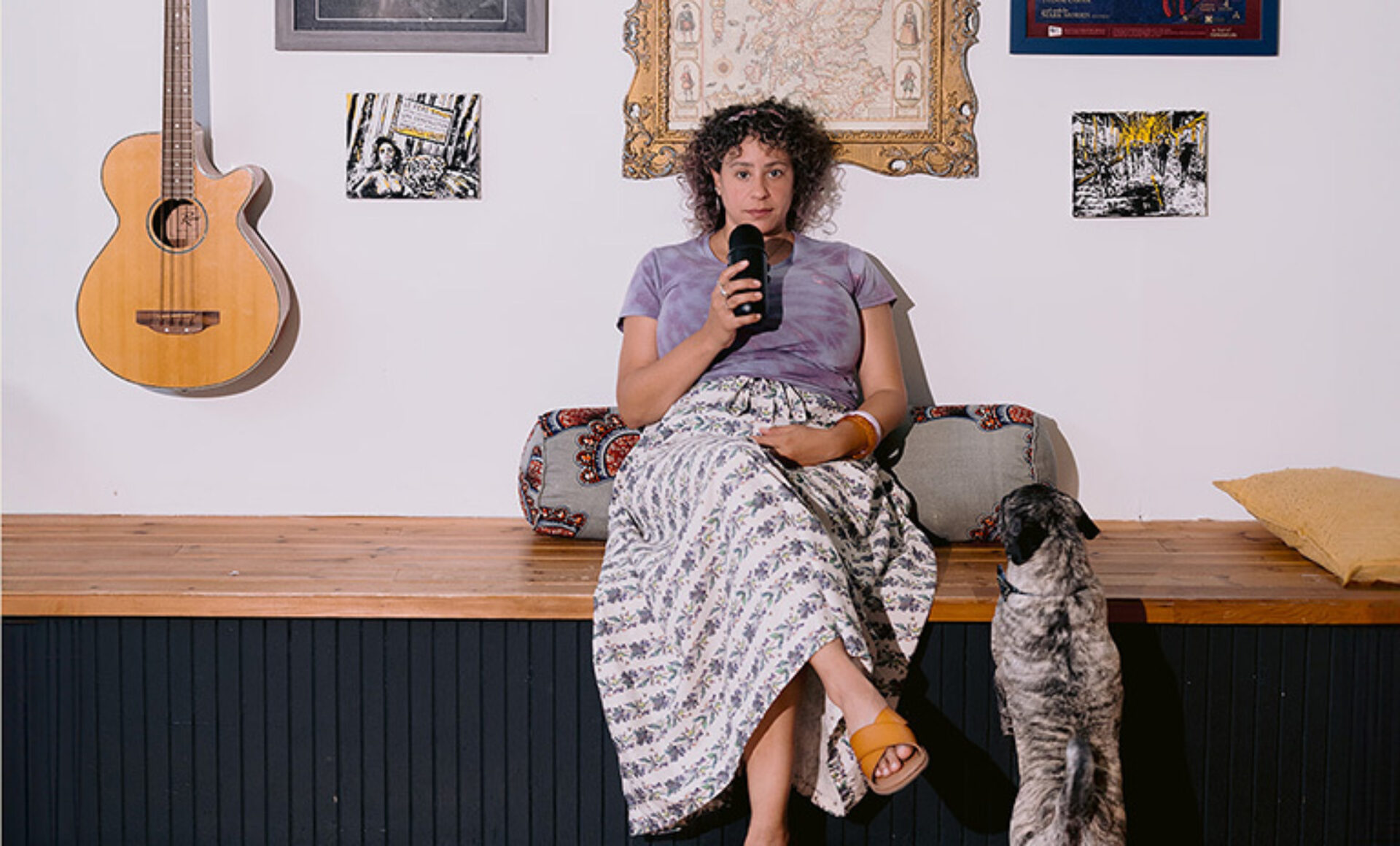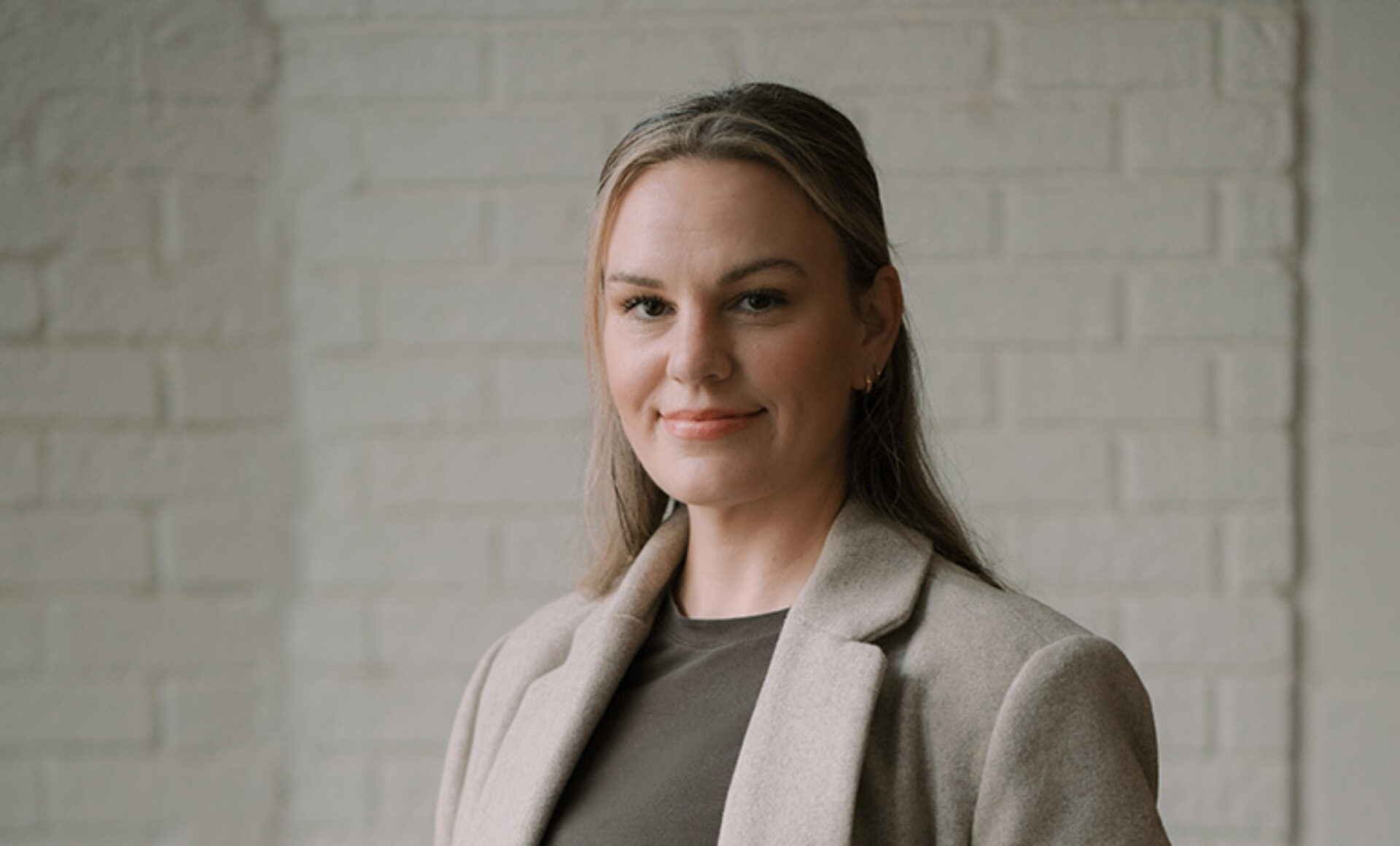Earlier this summer, as designers from all over the world gathered in Chicago for Chicago Design Week, IIDA members kicked off the week at our Annual Meeting on June 8, where we celebrated excellence, saw friends new and old, and set the stage for an exciting next year. We also welcomed the 2025-2026 IIDA International Board of Directors, who will shape the association’s priorities over the course of the next year, and heard from the incoming 2025-2026 President of the Board of Directors, Stacey Crumbaker, IIDA, Assoc. AIA.
An architect and interior designer, Crumbaker has long advocated for stronger ties between the professions, and has previously served as the Vice President of Advocacy for the board. Under her guidance, and working in tandem with the Advocacy Advisory Council, she has refined and aligned our national advocacy work, making great strides in the arena of professional regulation, and broadened our efforts to positively impact climate action, social justice, and equity.
As she steps into this role, her home state of Washington is preparing to enter the legislative arena with strong momentum building in the Pacific Northwest region for recognition of interior design. With her leadership, we look forward to a big year for IIDA, our members, and the interior design profession. Join us in welcoming our new board, and read Crumbaker’s address to the association below, delivered at the Annual Meeting, where she shares her personal history and vision for our future.
From Stacey Crumbaker:
I’m truly honored to serve as your next IIDA President.
Young Stacey had big dreams of being a librarian or a pediatric oncologist. I imagined my future organizing books or fighting childhood cancer. You know, small dreams … no pressure, right? But even then, I knew I wanted to do work that mattered — something grounded in care, community, and impact.
Fast forward a few years, and one of those high school aptitude tests suggested interior design. At the time, I wasn’t even sure what that meant … Funny to think one standardized test set my whole story in motion.
I grew up in Arizona, surrounded by sun, dust, and wide-open space. Eventually, I found my way to Seattle and then a little island off the coast. Each place holds deep histories — shaped by the enduring presence of Indigenous communities long before I arrived. For me, they framed how I thought about design: restraint, rhythm, and how place shapes people.

Image courtesy of Stacey Crumbaker
Somewhere along the way, I began designing schools — places where design is called to do more. It supports growth and helps people feel like they belong, even as they’re still becoming who they are. It wasn’t just the projects — it was in that stretch of discovery that curiosity took root.
Curiosity comes from the Latin word, “cura,” which means “to care.” It’s not just about asking questions. It’s about tending to something. Paying attention. Staying with it. That’s what design has always asked of me — and what I believe it asks of all of us. Design became the language where imagination met responsibility (and occasionally a fire code).
I hear that language most clearly in spaces that aren’t flashy — rather, thoughtfully understated: a quiet library, a classroom filled with natural light, chairs that invite conversation. They aren’t “perfect” spaces. But someone paid attention. And that makes all the difference.
I carried this into my work designing learning settings, where I’ve seen how space shapes confidence and belonging. When a learner feels seen and safe — it’s unmistakable. It’s in their posture, their pace, their willingness to participate. It’s not dramatic. It’s quiet. But it changes everything.
Many of us came into this practice during a time of profound transition: between analog and digital, fixed paths and nonlinear careers, promises of progress and the realities of inequity and climate risk. We are a generation shaped by change — by the belief that design could do more, and by the systems that too often kept it small. That’s exactly what prepares us to shape what’s ahead.
I learned to lead with IIDA. It gave me space to grow — not just as a designer, but as an advocate for the profession. A place to ask sticky questions, connect with people who care, and move design forward together. Now we’re in a position to rethink the systems that have long defined us. And we must. This is why I’m here. And what I believe.
As IIDA President, I am committed to advancing design as a force for climate action, social justice, and equity — especially in a world that too often chooses what is known over change.
To meet this moment, I believe IIDA has the responsibility to continually grow as a learning organization — one that not only shares knowledge but evolves with it.
If we want to shape the future of design, we can’t just talk about learning — we must live it. That means being an organization that reflects, adapts, and grows alongside the people we serve. We should be learning how to design spaces that grow with people, anticipate change, and dismantle bias — especially the kinds we’ve stopped noticing.
We need to be the kind of profession that learns faster than the world changes — by building a culture of unbounded curiosity, uncomfortable reflection, and radical adaptation. One that makes room for emerging voices. One that sees uncertainty not as a roadblock, but as a spark for what’s possible — and for what hasn’t yet been imagined.
This is how we prepare for whatever comes next — and how we lead with clarity, integrity, and care. Because design isn’t just what we do. It’s the key to how we move forward. We are not just a generation in transition. We are a generation prepared to lead transformation. I’m grateful for those who shaped my path — and for the trust you’ve placed in me. Together, we don’t just design spaces, we design futures.
Let’s build an IIDA that makes everyone feel like it was made for them.






